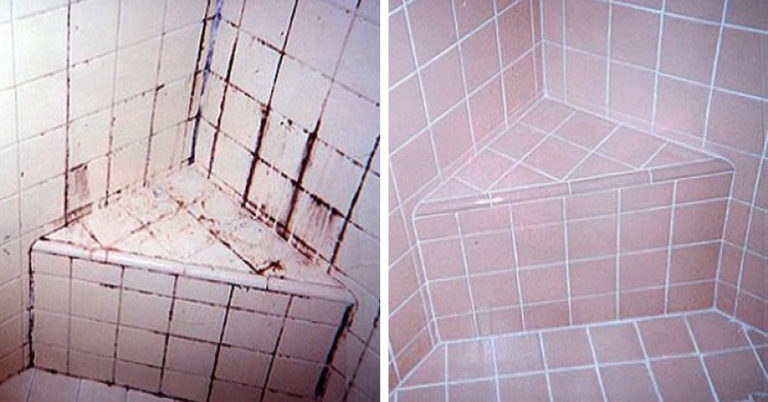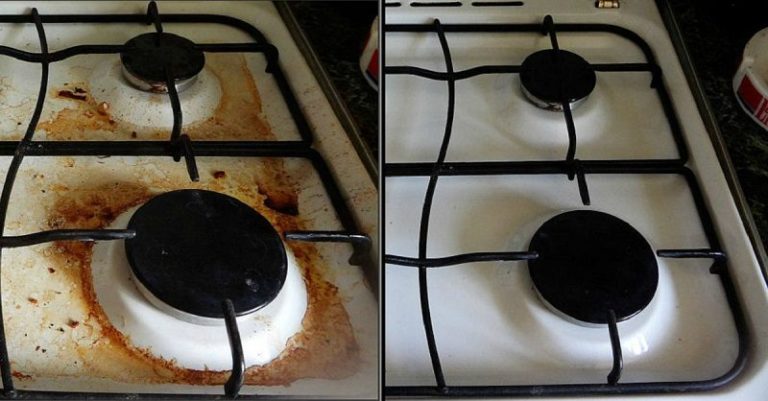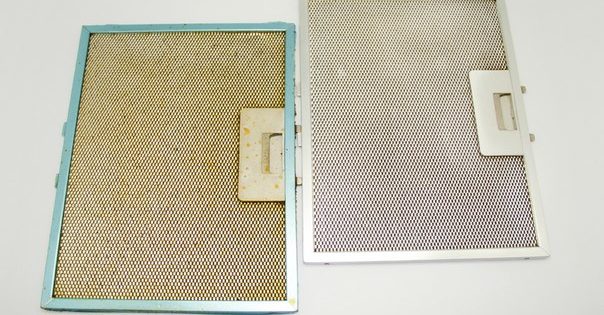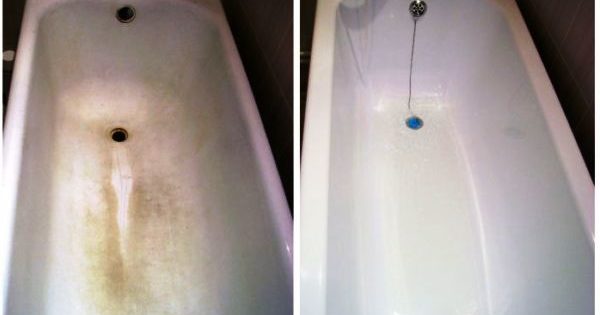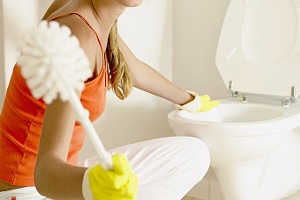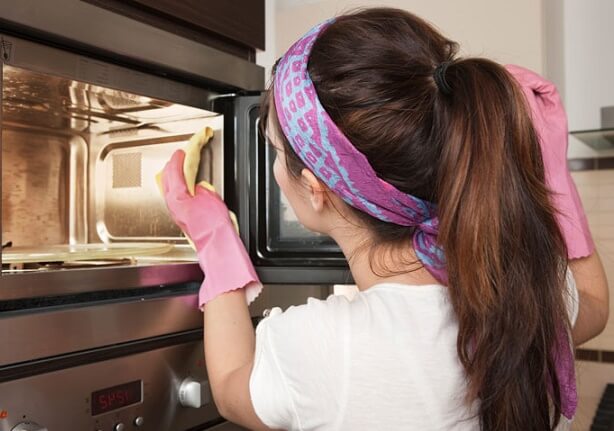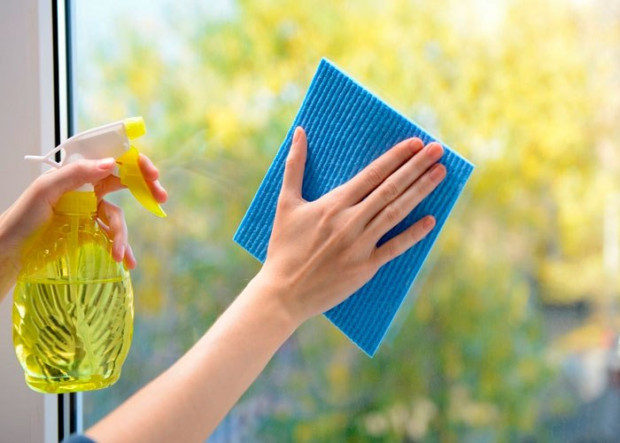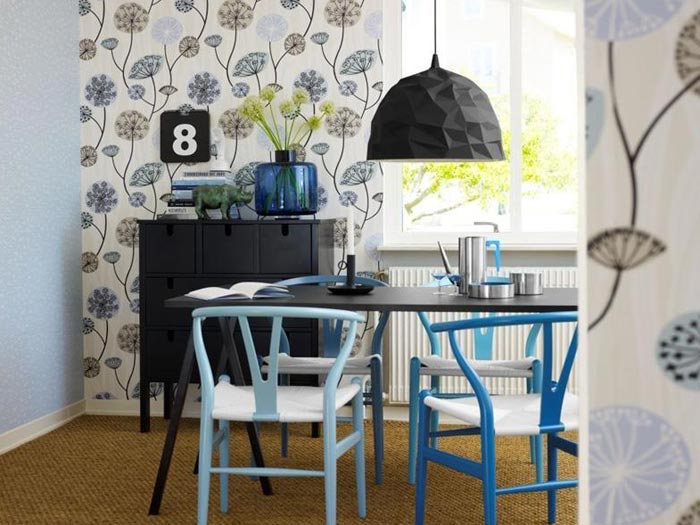16 Ways To Clean Kitchen Cabinets From Grease
Almost any cooking process involves splashing oil and fumes containing particles of fat. All this safely settles on kitchen facadesforming a sticky layer that instantly attracts dust. A pedantic hostess will say that you just need to regularly wipe all the kitchen surfaces, but in reality this is not always enough. Some contaminants are difficult to remove even when they are fresh, and if the time has passed and the cabinets in the kitchen are covered with a thick layer of plaque, then a damp rag will not take them. How to bring the kitchen in good condition? How and with what to clean the cupboards in the kitchen from grease? Which remedies are more gentle and effective? We are looking for the most effective ways together!
Some recommendations
It happens that after a hard day's work and the second shift in the kitchen you get tired so that you no longer have the strength or desire to wipe all the kitchen furniture. It happens that it’s just laziness to do it, but it happens that you inherited a kitchen set after past tenants in a rented apartment, and it is clearly noticeable that, to put it mildly, not very neat people lived before you. Situations are different - the result is one. This is a greasy raid that you can’t handle with your bare hands.
There are two ways to clean cabinets from grease.. it household chemicals and folk remedies. Actually, the choice of one of two methods divides all the hostesses into two camps. Fans of household chemicals believe that this is a more effective and quick way to achieve the desired result, and opponents note that speed and effect are often achieved in a not entirely safe way, indicating the toxicity of store-based products. Folk methods, according to their fans, are no less effective, but completely safe, and the necessary components are inexpensive and can be found in any apartment.
Whichever way you choose, consider some important rules:
- if household chemicals are used, then carefully read the label and instructions for use. Pay attention to what surfaces the product is intended for and in what concentrations it can be used;
- Some cleaning products can corrode plastic and paint, leaving whitish spots on them. If you are not sure that the chosen product is safe, it is better to test it on the most isolated part of the kitchen facade;
- clean kitchen furniture from grease better with soft materials - put hard metal sponges to the side. Microfiber, cloth, flannel will do. Stiff bristles can scratch the kitchen facade. In the best case, the greasy coating will not be completely removed, and scratches on it will become a place for further accumulation of dirt;
- for cleaning kitchen furniture do not use abrasive productsthat may scratch the surface. Preference is given to liquids, gels and pastes;
- it is better to clean with gloves. This applies to both working with household chemicals and with folk recipes;
- when using household chemicals, take care of good ventilation of the room;
- heavily contaminated surfaces will have to be washed in several stages, each time applying the selected product for 30 minutes and washing it off, so do not worry if some stains cannot be removed the first time.
When the general rules are known, you can go to the specifics and find out than washing grease from furniture in the kitchen.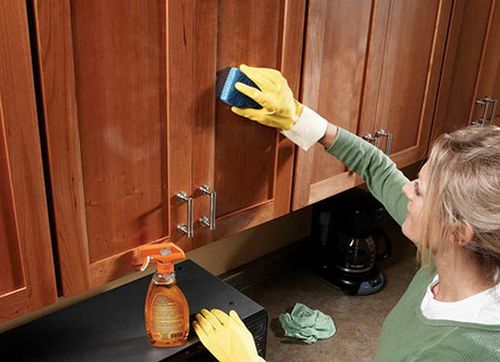
No. 1. Household chemicals
Household chemicals can achieve the fastest result. It is only important to choose a composition that is optimal for a particular surface. For example, facades made of MDF and finished with a film or plastic cannot be washed with chlorine and abrasive products. A decent manufacturer provides a list of surfaces that can be cleaned with a specific tool.
The selection of all kinds of substances is huge. One of the most popular is the means of the trademarks “Mr. Muscle”, “Santry”, “Shumanit”, “Sanita”, “Silit Bang”, “Gala” and some others. Each bottle will indicate the method of application, but often it is as follows:
- rinse contaminated surface with warm water;
- apply detergent, rub with a sponge / rag;
- wash off the remnants of detergent from the surface;
- repeat the process if necessary;
We repeat that when working with chemistry it is important to wear gloves, since potent components can damage the skin. Sometimes the respiratory system also needs protection, but if you suffer from allergies or bronchial diseases, it is better to replace household chemicals with alternative methods.
Folk remedies do not cause allergies, do not spoil the surface, are inexpensive, can be made even without going to the store, but at the same time they are almost as effective as toxic household chemicals, so we will pay maximum attention to them.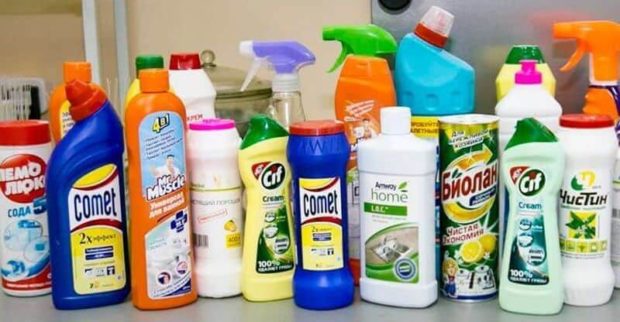
No. 2. Soda + vegetable oil
it one of the most effective ways to clean grease cabinets in the kitchen, suitable for all types of surfaces, including and for wooden facades. It is necessary to mix soda and vegetable oil in a ratio of 2: 1, you will get a thick slurry with a consistency, like sour cream. The mixture is applied to the places of pollution, they can be additionally gently rubbed with a sponge, but do not overdo it. Then the pulp should be left for 15-30 minutes, then wipe it with a damp sponge. Particles of fat should literally fall off. If all the contamination cannot be removed, you can repeat the procedure. In order not to stain the entire kitchen with such a mixture and particles of the removed fat, it is better to lay under the cleaned surface of the newspaper.
The vegetable oil included in the product nourishes wooden surfaces well and forms a kind of protective film on them, which allows you to hide small scuffs, scratches and other defects. We get 2-in-1.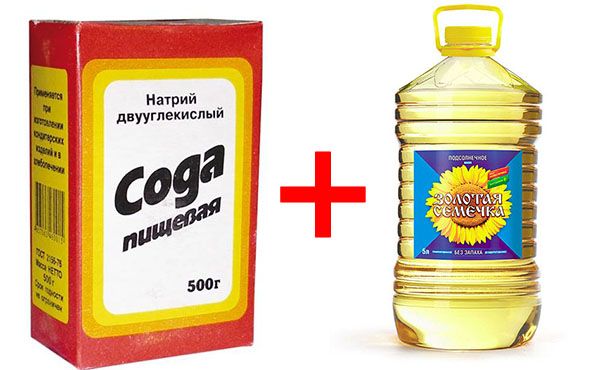
No. 3. Ammonia
Ammonia is also found in any apartment. To prepare a cleaning agent from it, it is enough to dissolve 1 tbsp in 1 liter of water. a spoonful of ammonia. The resulting solution processes all contaminated surfaces. It is most convenient to apply liquid from a spray bottle, but you can use a sponge or a rag. Leave the solution on the surface for several minutes, after which you can gently rinse it off with a damp sponge. A similar method will cope with a small plaque. To remove more serious contamination, it is better to leave the product for 15-20 minutes.
Number 4. Baking powder
Another component that can be found in almost every apartment. It is necessary to add a little water to the powder to get a slurry, which then should be applied to contaminated surfaces and left for 20-30 minutes. The powder will gradually acquire a yellowish tint - this is a consequence of fat acidification. It remains only to wash off all the dirt with a damp sponge and wipe the surface dry.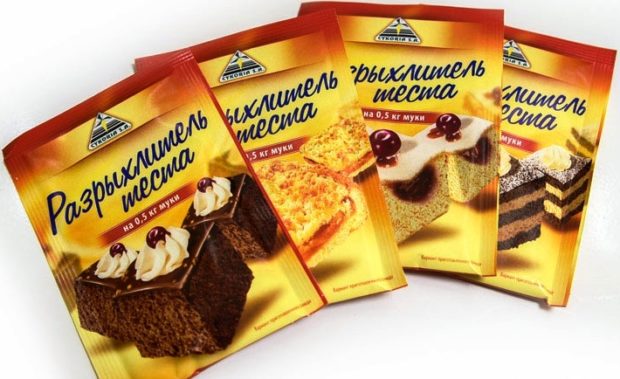
No. 5. Mustard powder
This way can not be called universal. It is suitable for facades with a good protective coating, as well as for sinksrefrigerator slabs, tiles. Using it to clean a wooden surface is not recommended.
For many decades, mustard powder has been used by domestic housewives, who realized that it perfectly dissolves fatty contaminants.To cope with a greasy coating, it is enough to moisten the contaminated place and sprinkle it with mustard powder. All that remains is to gently rub it with a dry cloth, and then remove it with a piece of removed fat with a damp sponge or rag. Most of the dirt should remain on a napkin.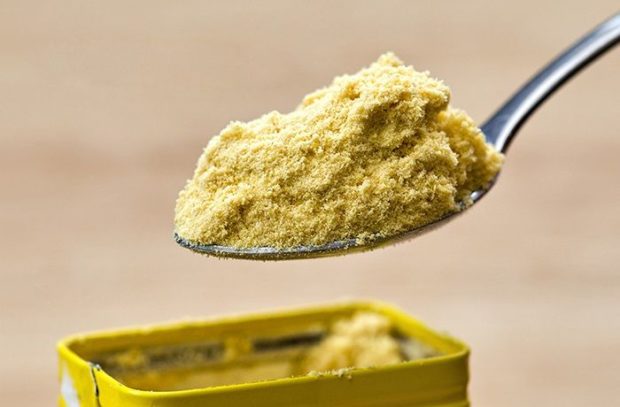
No. 6. Alcohol + Vinegar
How to wash fat from kitchen furniture, if not alcohol! Mix alcohol or vodka with table vinegar and water in a 1: 1: 2 ratio. You can add essential oil to the solution (any one according to your taste) in order to get a pleasant aroma after washing. The mixture must be generously applied to the kitchen furniture (it can also be on a stove, sink, refrigerator) and left for 10-15 minutes, after which all stains, greasy stains, deposits and other contaminants should very easily go away. Mistresses note that such a composition copes well with limescale on tiles, ceramics, and a water tap.
Number 7. Alcohol
Alcohol can be used solo, without other components. The sponge is well moistened with alcohol or vodka, and then wiped with it the surface of the kitchen. Slight contaminations will go away almost immediately, but in order to cope with a more serious coating, it is better to moisten the surface with alcohol and leave for 15-20 minutes, after which the remaining dirt and alcohol are removed with a sponge. After such manipulations, the furniture is recommended to be treated with a solution of several drops of eucalyptus essential oil or ate in a glass of water. This will create a pleasant aroma in the kitchen and fuel the furniture.
Number 8. Apple vinegar
If ordinary table vinegar is diluted with water in a ratio of 1: 1, then we get a good tool that can dissolve pollution. If the smell of vinegar seems too sharp and unpleasant, it is better to use apple cider vinegar. The contaminated surface is moistened with a solution, and after 20-30 minutes they begin to gently wipe off the dirt with a sponge. The method requires patience from the hostess.
No. 9. Citric Acid + Detergent
To make this product, it is necessary to add 15 g of citric acid and a couple of drops of dishwashing detergent in 1 liter of water, mix well and spray the contaminated surfaces with the resulting solution. It is better to leave the product for about 30 minutes, so that it properly breaks down the fat. Then, as usual, rub the particularly contaminated area with a sponge and treat all surfaces with a damp sponge.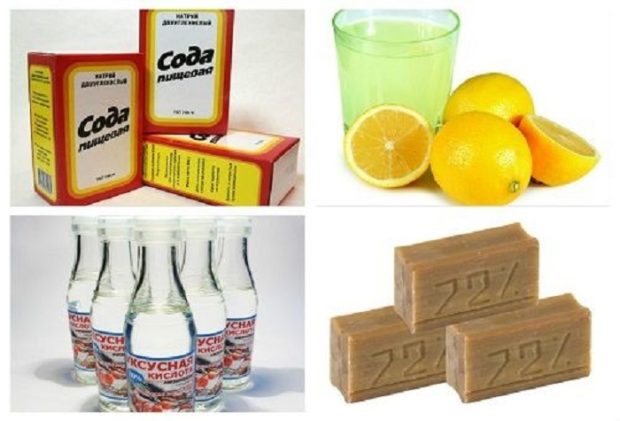
No. 10. Fresh lemon
If the situation is not very neglected, then you can clean the furniture from fat with a slice of lemon. She needs to carefully rub the contaminated surface, and so that the juice literally drains. As in previous cases, leave the product for 20-30 minutes, then rinse it off with a sponge dipped in warm water. You may have to make some effort in some places. After completing all the manipulations, it remains to dry the furniture with a paper towel. A pleasant citrus flavor will be a bonus.
No. 11. Clay
The most common clay perfectly absorbs fat, so it is useful in our business. Table vinegar is added to it to get a soft pulp, which is evenly applied to contaminated surfaces. You can rub the fattest places a little, and then leave the product to dry, after which it is gently washed off with a soft sponge moistened with water.
No. 12. Salt
A solution of ordinary salt is suitable for regular processing of wooden surfaces. It perfectly disinfects, removes fat deposits and prevents the growth of harmful bacteria. Therefore, once a week do not be too lazy to process wooden facades and countertop.
No. 13. Soap + Soda
Fat actively settles not only on kitchen cabinets, but also on a tile of a working apron. In this case, you can use the following method. Laundry soap is rubbed on a coarse grater and dissolved in water. A cloudy solution should be obtained that thoroughly wipes the surface. After that, soda is applied to the sponge, which must be treated surface. Leave the active ingredients for 15-20 minutes, after which everything can be washed off with a sponge dipped in warm water.Laundry soap can be replaced with ordinary detergent. The method is very effective, but not suitable for furniture, especially with a glossy surfaceas particles of soda can leave scratches.
No. 14. Steam cleaning
If at home there is a steam generator for clothes, then it can also be adapted as a means of caring for kitchen surfaces. Buying it only for cleaning kitchen cabinets is not practical - such a technique is not cheap. If during normal washing with a sponge, the water temperature cannot reach above 400C, then water leaves the steam generator in the form of steam, i.e. has a temperature above 1000C. Due to this, the method has many advantages:
- dirt literally flies off surfaces;
- you can even remove old fat that cannot be removed in any other way;
- steam copes well not only with greasy deposits, but also with scale, burnout and other impurities, so that you can process not only the facades of kitchen furniture, but also the walls, stove, kitchen equipment;
- heat kills fungus and microbes, so that with cleaning we also get disinfection;
- all unpleasant odors are completely eliminated;
- stainless steel and glass will sparkle like new.
In addition, the steam cleaning method is completely safe. The risk of damaging the surfaces is negligible, and allergies will not arise.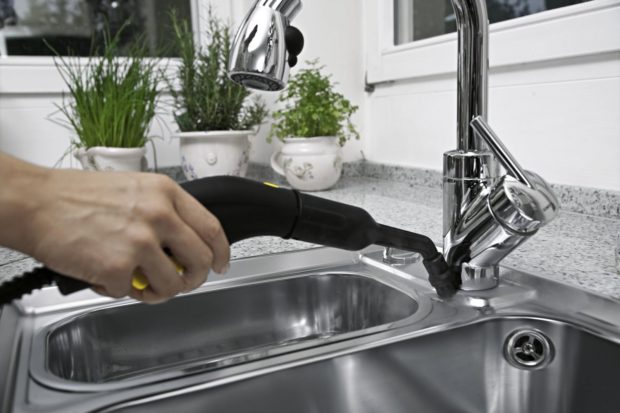
Number 15. Melamine sponge
Melamine sponge is a know-how in the field of home care. It looks like an almost ordinary sponge, it compresses well, gropingly reminds rubber. It acts just like an eraser on a pencil. Using a melamine sponge, traces of a marker, felt-tip pen, and some other types of contaminants can be removed from surfaces. Gradually, the sponge erases, like the eraser. The material is absolutely safe and harmless, in most cases it can replace a detergent.
No. 16. Dishwashing Detergent
Completing our rating is the simplest and most obvious way, which, for sure, is used by all the housewives. Everyone knows that the composition of dishwashing detergents includes the strongest substances that break down fat. What you need in the fight against greasy plaque on kitchen furniture! Small dirt can be removed simply with a foam sponge. If the coating is already decent, then it is better to leave the detergent on the surface for 15-20 minutes, after which everything should be thoroughly washed off.
In conclusion, we note that with special attention it is necessary to approach the cleaning of glossy and glass surfaces - there should not be any hint of abrasive cleaners here. Also, do not forget to ventilate the room, as many store and folk remedies have a pungent smell.

